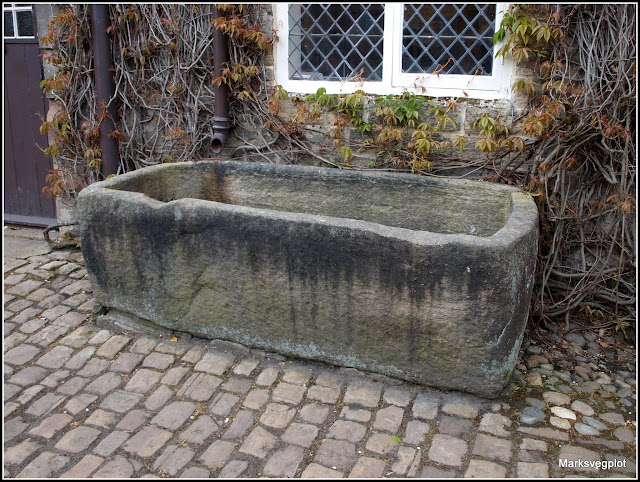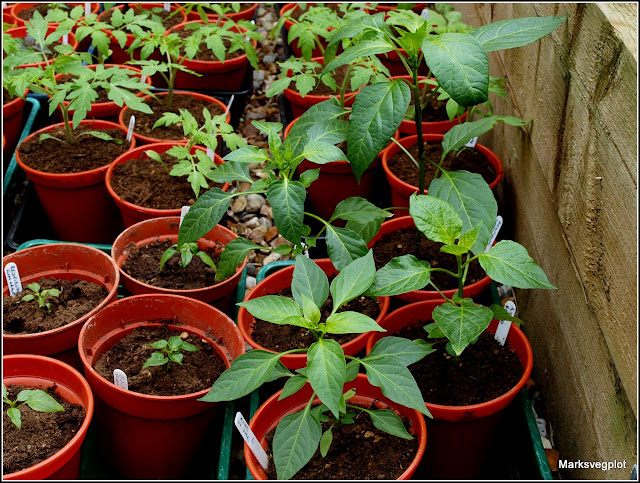If you hadn't already guessed it because of my recent low profile on Blogger, I have been away for a few days. Jane and I have been spending time with her elderly mother, who lives near Warrington. While we were there we escaped for a few hours to visit
Rufford Old Hall, a property in Lancashire (about 10 miles South of Preston), owned by the National Trust.
This is not one of the National Trust's bigger properties, but it is one with lots of interesting features. Originally built in about 1530 for local magnate Sir Robert Hesketh, it remained in the Hesketh family until 1936. Only part of the original H-shaped building remains, but luckily the surviving part includes the Great Hall, which is very impressive, and particularly interesting to me because of the displays of arms and armour it contains, much of it dating back to the 17th Century and the English Civil War.
 |
| 17th C breastplates, swords and helmets - including Morion, Burgonet, Close and Lobster styles. |
 |
| Pole-arms including Halberds, Pole-axes and a Partisan |
 |
| 16th C Continental armour |
The Great Hall also includes this imposing ornately carved wooden screen, made in about 1530 - 1540.
It surprised me to learn that this amazing piece of furniture / art was intended primarily to screen-off the entrance to the kitchens, so that the aristocratic diners in the hall didn't have to see the 'minions' labouring away on making their food! Reading-up on it, I found that the screen's intricate design includes at least 3 probably deliberate errors - imperfections included to avoid a charge of heresy, on the understanding that only God could create something perfect.
The National Trust does not permit photography inside the property, with the exception of the Great Hall and from this position:-
That is the view of the Hall that you get from a small opening in the wall of a 2nd-storey Drawing Room. This type of opening is known as a "squint". It allows people upstairs to take a discreet look at the goings-on down below. It also affords a closer view of the carved angels at the ends of the five beams of the
Hammerbeam roof.
Other items that attracted our attention inside included the very realistic displays of food on the tables of various rooms, laid out to illustrate the sort of fare that would have been eaten at various periods of the history of the house. We enquired what they were made of, and were surprised to learn that mostly they were real food (e.g. cakes, meat, fruit and vegetables) that had been cooked very slowly until completely desiccated, but still retaining their original shape and colour.
We also liked the collection of very detailed watercolour paintings of plants and flowers, painted by a lady from Southampton whose name I forget. I must say that I felt it a bit odd that paintings from so far afield and with no connection to this property or its owners were displayed here. I believe that it would be more appropriate to display work by local artists. Unfortunately due to the aforesaid photography restrictions, I cannot show you any of them either.
Our exploration of the gardens of this property were much curtailed by the very cold and breezy weather. If it had been warmer, we would have lingered longer!
It is the height of the Bluebell season at present, so it was no surprise to see the paths lined with swathes of them:
As well as visiting the "posh" bits of NT properties, we always like looking at the functional, more mundane bits too - like this piggery with walls made of stone slabs. [There are also stables and a shippen (cow-byre) too.]
This granite water-trough must have taken a fair bit of work to make!
Of course, if it were mine I would have it full of vegetable plants by now...
Jane and I are members of the NT, so we get into properties like this for free, but even if you are not a member, I think it is well worth a visit. The admission price is £8.50 for adults, £4.25 for children.
Finally, a mention of the Tea-Room (one of the most endearing features of many NT properties!). It was nice to see them serving proper home-made-style cakes, including local speciality the
Eccles cake, traditional Lancashire Hotpot with red cabbage, and Lancashire Rarebit (an upmarket form of cheese-on-toast, this one made with Lancashire cheese). In view of the near-freezing weather a hot snack and a nice pot of tea was very welcome indeed.





















































